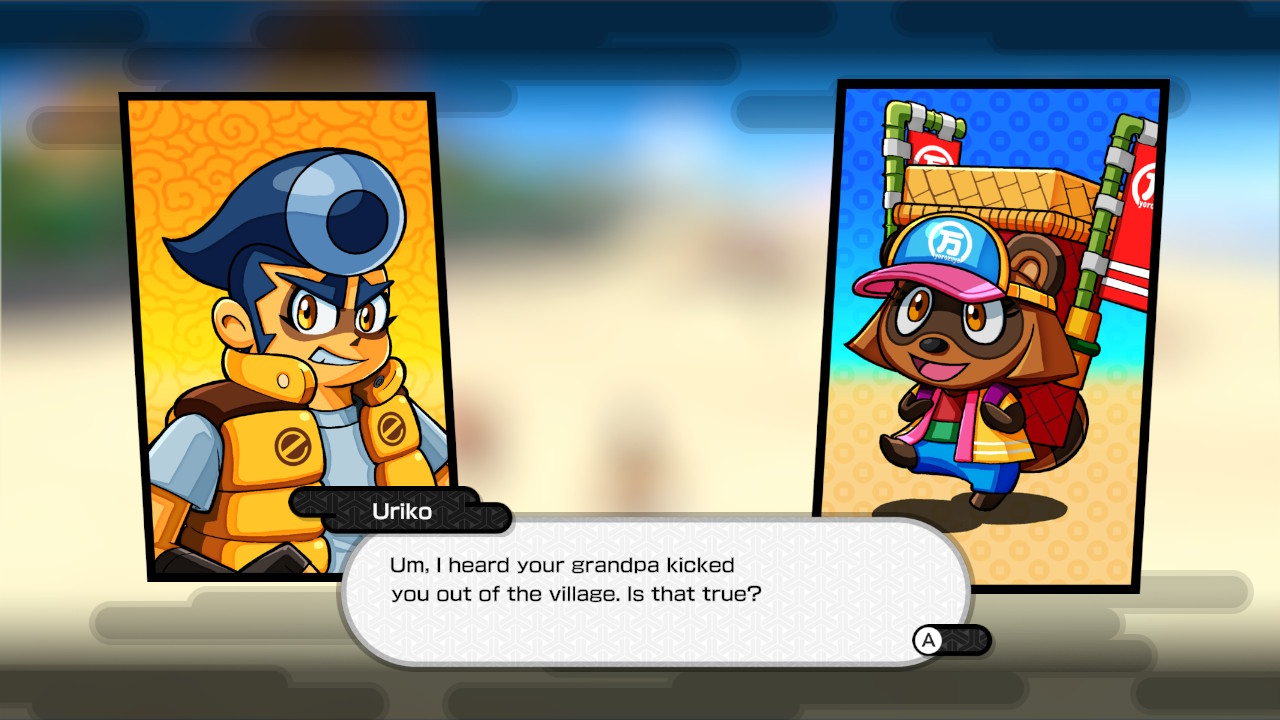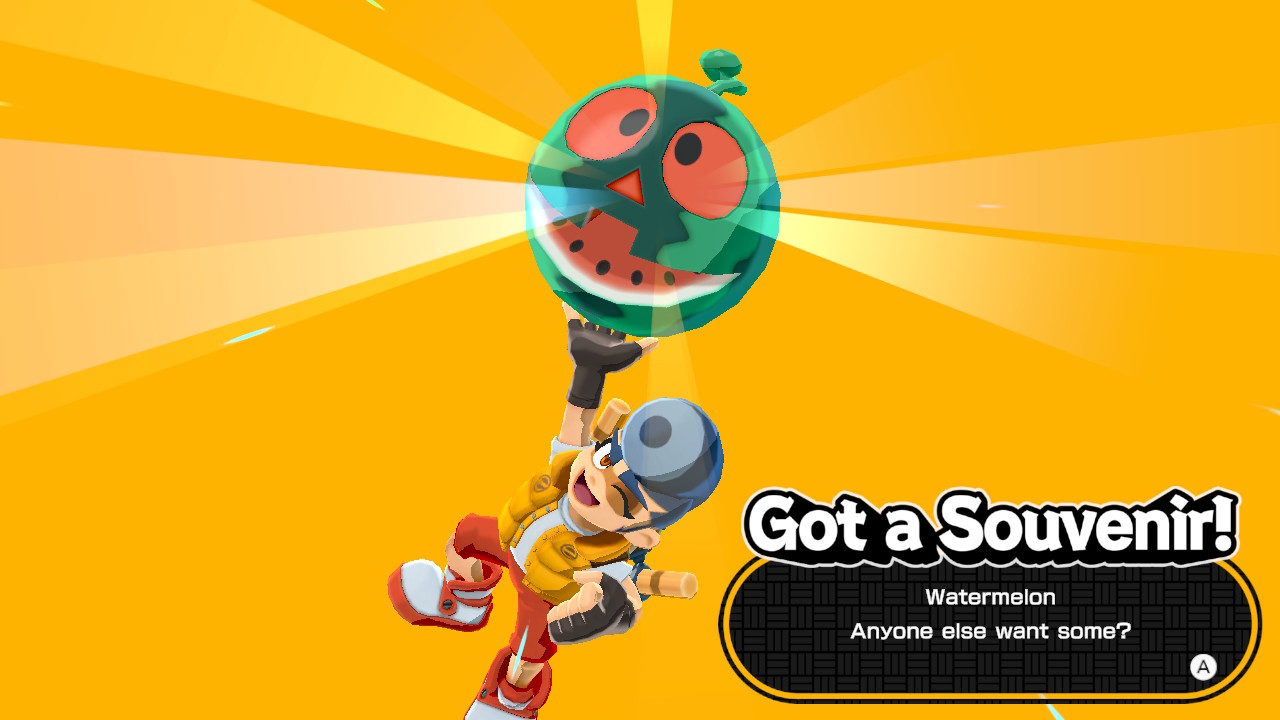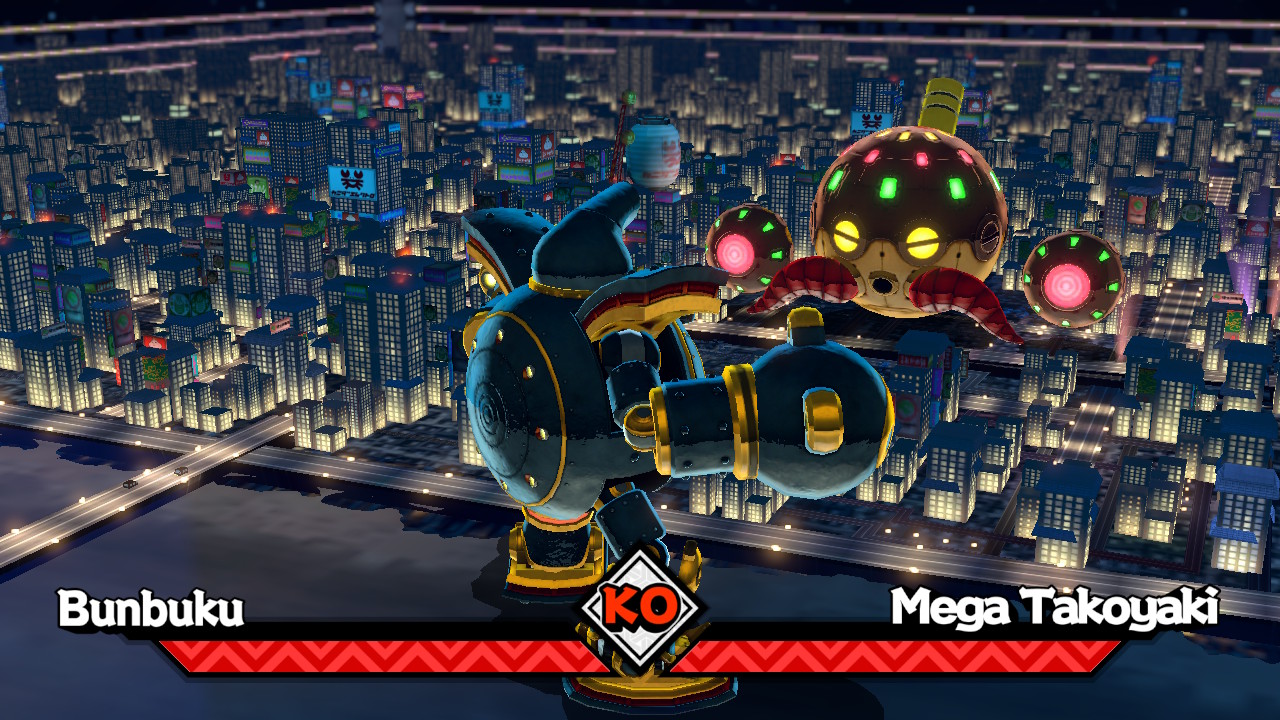System: Switch
Release date: September 3, 2024
Developer: Good-Feel
Publisher: Spike Chunsoft
BAKERU is an interesting mix of past and present for Good-Feel. As the co-producer of the long-running Ganbare Goemon series, Etsunobu Ebisu has clearly brought his expertise from that here by creating what feels like a spiritual successor in tone and presentation, and with an impressive resume of titles of a similar genre on Switch (including Princess Peach: Showtime! and Kirby’s Extra Epic Yarn) this game represents the best of both worlds. Thankfully, it delivers on both fronts to be one of the best 3D action games I’ve played on the system this year.
With his army of Festival Troops, the Oracle Saitoro has taken over Japan and plunged it into, of all things, an endless festival. Japan’s heroes have seemingly fallen under his influence and are nowhere to be found, meaning that there is nobody to oppose him. Enter our titular hero Bakeru, a lazy tanuki who would prefer to spend his time sightseeing, eating, and relaxing than saving the world. But his heart is in the right place, and it turns out that he’s the only hope Japan has. So even though the odds are stacked against him, he sets out on a journey across the land to put a stop to the villain’s plans. After being badgered into it by the elder of his clan, of course. What begins as a fairly linear journey between stages will eventually open up to become something much bigger as Bakeru meets the heroes of Japan and learns what needs to be done to save the land, but the game keeps its story limited to brief cutscenes between stages, told mostly in manga-style portraits. It has a cheerful Saturday-morning cartoon vibe to it that keeps the tone light and keeps the focus on the action.
The game describes itself as a “Wild Action” title, and Bakeru has plenty of tricks up his sleeve in his quest to save Japan from the evil Oracle. First and foremost is the taiko drum, which serves as your primary method of offense and defense. Sticks are assigned to individual buttons and can be chained together for combo attacks, held down separately for special attacks, and also held down together for a small area shockwave. Combat has a fluid and almost dance-like elegance to it, as Bakeru will automatically home in on the nearest enemy to deliver a series of swift blows, each one punctuated by a very satisfying drumbeat and small rippling soundwave. You can also dodge enemy attacks (although not in the middle of a combo unfortunately, which does mean you’ll need to be more methodical at times) and block them using the body of the drum itself, with perfectly timing these movements allowing you a small window to strike back or to reflect attacks respectively. None of this is strictly necessary as combat in the game is never particularly challenging: most enemies will go down in one or two hits, and their attacks are slow and clearly telegraphed, giving you ample opportunity to avoid them. But I found it to be extremely enjoyable despite this, with the variety of options and visual spectacle making up for the lack of engagement from enemies.

Bakeru will also acquire four Henge Licenses over the course of his journey, which allow him for a brief time to take on the appearance of one of Japan’s heroes and utilize their powers in battle. This is a limited-time ability, determined by a meter that will gradually fill as you defeat enemies. Some enemies will be more susceptible to certain Henge transformations than others, and it’s a nice way to further diversify the combat at times if you choose. It’s unfortunate that only one of these abilities has any application outside of combat however, being used at times to fit into small spaces and cross larger gaps with a longer jump; there is plenty of variety in the layout of stages, but I appreciated these smaller moments that required a change in approach and would have liked to have seen the other three Henge abilities utilized in a similar fashion in the game.
One of the most impressive things about BAKERU is its stage design: most are based on one of Japan’s prefectures, and although creative liberties have definitely been taken there are a lot of overt and subtle references to various aspects of Japanese culture, both modern and traditional. Even if these go straight over your head (I am sure plenty went over mine during my time with the game) it’s easy to appreciate the variety and visual splendor of it all, from the twisting streets and open canals of Okayama (clearly inspired by Kurashiki) to the rocky hot springs of Oita. There are 47 prefectures in Japan, and every one of them has at least one stage to its name, with its own inspirations and references that make them all feel unique, and invite you to explore to see what you can either uncover if you’re familiar with the area, or learn if you’re not.
If there is one thing I would fault the game on here, however, it would be the lack of enemy variety, with a lot of designs being reused between stages, the only differences being a few palette swaps here and there, slightly more health, or different weapons. It doesn’t detract from the creativity of the stage design, but it does sometimes lend a certain homogenous feeling to the game as you enter a brand new area only to face off against the same foes you’ve been wading through for the last several stages. The same could also be said for the soundtrack, which is appropriately energetic and uses a lot of traditional Japanese instruments for an added feel of cultural authenticity, but is often reused between stages.

For the most part stages are a cleverly designed mixture of combat and platforming, with your ultimate end goal to break three lanterns before beating the large tower-like drum at the end. There are always more than three lanterns to find in a stage, so if you happen to miss one as you progress, or find one too difficult to break due to enemies guarding it or a platforming challenge required to get to it, there will be another opportunity to meet the quota later. Movement is as responsive and fluid as combat, and although a few of the later stages can have some frustrating moments with rotating and dissolving platforms that require you to move quickly, nothing felt insurmountable or notably more difficult whilst I was playing, and it keeps a consistent level of challenge throughout that leans towards the easier side of things.
You have a reasonable amount of control over the camera in most instances, and when it shifts to accommodate a change in perspective (usually for 2D-style platforming) this is often more of a help than a hindrance. Checkpoints are very reasonably spaced when the platforming becomes a greater focus than the action, and the punishment for falling is occasionally the loss of up to 100 coins (typically less, and none at all if you have died within the last few minutes) and being deposited back at the last checkpoint. I never actually got a game over during my time playing, as coins are plentiful and dropped from every enemy and destructible objects.
There is plenty of reason to explore each stage outside of finding the lanterns, with each having three souvenirs (one pendant for that prefecture, and two items relating to it) and five pieces of trivia to acquire. Many are in plain sight or easily uncovered if you take the time to look, but just as many will require you to comb the stage from top to bottom to locate. Most trivia pieces will give you an interesting and utterly random fact about Japanese culture or a location, although a few are more in the way of general knowledge, which suggests some elements may not have translated across entirely. There isn’t much reason to revisit a stage once you’ve cleared it and acquired all these, although the tanuki you’ll be able to find later in the game give some stages a degree of replayability. These are even more fiendishly hidden, being disguised as part of the scenery with very small visual cues as to their location that are easily missed. Finding these will also allow you to upgrade the Bunbuku, although the cost for this is quite steep and the lack of challenge make this less of a bonus than it otherwise might have been.

Occasionally Bakeru will need to call on his allies for assistance in his journey, and major boss battles are often conducted from within the Bunbuku, a giant flying tea kettle which will transform into a giant robot for these occasions, as you might expect. The action slows down noticeably here, and although these titanic clashes are visually spectacular, the relatively small amount of damage you deal each time you trade blows with your opponent, combined with the painful lack of mobility, make these stages feel more like a struggle than they should. Many stages will have you piloting the mechanized canine Browsby for a short race course or on-rails arcade shooter as he transforms into the required vehicle. Browsby is thankfully far more responsive than the clunky Bunbuku, and these stages serve as a nice break between the action platforming that makes up the majority of the game. Sometimes you’ll also need to race through a stage as the camera slowly advances and these feel somewhat poorly thought-out, as the zoomed-out fixed angle makes it difficult to navigate and see what obstacles or secrets are ahead. Fortunately, there are only a handful of these to contend with, and they’re notably shorter than normal stages due to their linear nature.
Fortunately the game runs incredibly well on Switch, and I never noticed any frame drops during combat despite the large number of enemies on the screen that will typically swarm you all at once when they see you. Given the visual spectacle of each level and fast, fluid nature of the combat, it’s a relief that a consistent frame rate is maintained throughout, and there is an impressive level of draw distance for larger objects, which makes it easy to spot the telltale glow of lanterns and the location of the drum tower. Lighting is also especially impressive, with the levels that are covered in fog being particularly noteworthy. Enemies are rendered as you approach them and there is no real pop-in to speak of, although this can lead to some odd visual effects at times. There is a level of quality and polish here that is reflective of Good-Feel’s work on earlier Switch titles, and it makes the game a joy to play in either docked or handheld.
The Verdict

I’ve never been to Japan and I have only a passing familiarity with its culture, so I’m sure that a lot of the finer points of BAKERU were lost on me. However, in my time spent journeying across the land in a giant mechanized flying kettle, I was captivated by what was presented. Each new locale offered something that felt unique and wonderful, and the game rewarded my exploration with another odd piece of trivia. It’s a title brimming with personality and charm that never fails to delight and entertain, and is more than worth your time.
BAKERU copy provided by the publisher for the purposes of this review.
